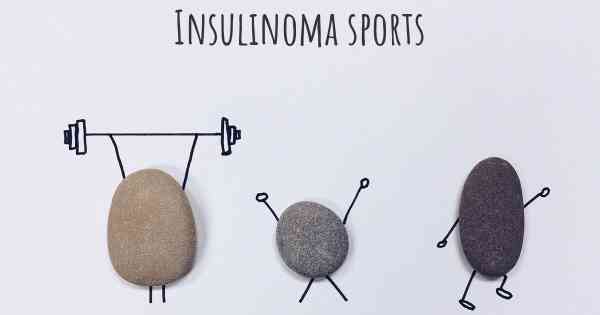6
Is it advisable to do exercise when affected by Insulinoma? Which activities would you suggest and how intense should they be?
See if it is advisable for people with Insulinoma to practice sports and which ones are the most recommended if you have Insulinoma

Insulinoma is a rare pancreatic tumor that causes excessive production of insulin, leading to low blood sugar levels (hypoglycemia). It can result in various symptoms such as confusion, weakness, dizziness, and even loss of consciousness. Managing insulinoma involves a combination of medical treatment and lifestyle modifications, including exercise.
Exercise and Insulinoma:
Engaging in regular exercise can be beneficial for individuals affected by insulinoma. However, it is crucial to approach exercise with caution and make necessary adjustments to ensure safety and prevent hypoglycemic episodes.
Benefits of Exercise:
Exercise offers numerous benefits for overall health and well-being, regardless of insulinoma. It helps maintain a healthy weight, improves cardiovascular fitness, enhances muscle strength, and boosts mood. Additionally, exercise can help regulate blood sugar levels and improve insulin sensitivity, which may be particularly beneficial for individuals with insulinoma.
Choosing the Right Activities:
When it comes to exercise, it is important to select activities that are safe and manageable for individuals with insulinoma. The choice of activities may vary depending on individual preferences, fitness level, and any other underlying health conditions. Here are some suggestions:
1. Aerobic Exercises: Low-impact aerobic exercises such as walking, swimming, cycling, or using an elliptical machine can be excellent choices. These activities help improve cardiovascular fitness without putting excessive stress on the body.
2. Strength Training: Incorporating strength training exercises into the routine can help build muscle strength and improve overall body composition. It is advisable to start with light weights and gradually increase the intensity under the guidance of a qualified fitness professional.
3. Flexibility and Balance: Activities like yoga, Pilates, or tai chi can improve flexibility, balance, and coordination. These exercises can be particularly beneficial for individuals with insulinoma as they focus on controlled movements and mindfulness.
Exercise Intensity:
The intensity of exercise should be carefully managed to avoid triggering hypoglycemic episodes. Here are some guidelines to consider:
1. Start Slow: If you are new to exercise or have been inactive for a while, it is important to start slowly and gradually increase the intensity over time. This allows your body to adapt and reduces the risk of sudden drops in blood sugar levels.
2. Monitor Blood Sugar Levels: Before, during, and after exercise, it is essential to monitor your blood sugar levels regularly. This helps you understand how your body responds to different activities and adjust your exercise routine accordingly.
3. Listen to Your Body: Pay attention to how you feel during exercise. If you experience symptoms such as dizziness, confusion, or weakness, it is important to stop exercising and treat any hypoglycemic episodes promptly.
4. Stay Hydrated: Proper hydration is crucial during exercise. Drink water before, during, and after your workout to maintain optimal hydration levels.
5. Consider Snacking: Depending on your individual needs and medical advice, you may need to have a small snack before or during exercise to prevent hypoglycemia. Consult with your healthcare provider or a registered dietitian for personalized recommendations.
Consultation with Healthcare Provider:
Before starting or modifying an exercise routine, it is essential to consult with your healthcare provider, especially if you have insulinoma. They can provide personalized guidance based on your specific condition, overall health, and any other medical considerations.
Conclusion:
Exercise can be beneficial for individuals affected by insulinoma, but it should be approached with caution. Choosing the right activities, monitoring blood sugar levels, and adjusting exercise intensity are crucial to ensure safety and prevent hypoglycemic episodes. Always consult with your healthcare provider for personalized advice and recommendations tailored to your individual needs.
Diseasemaps








